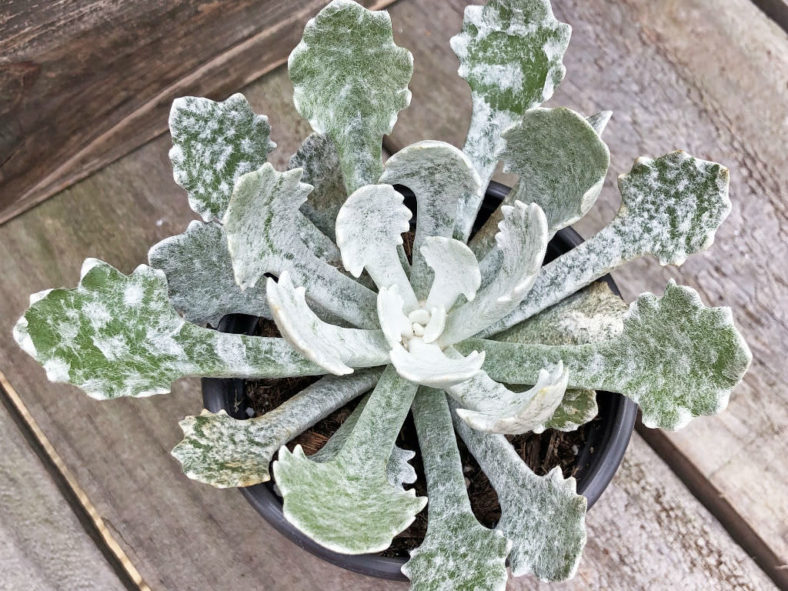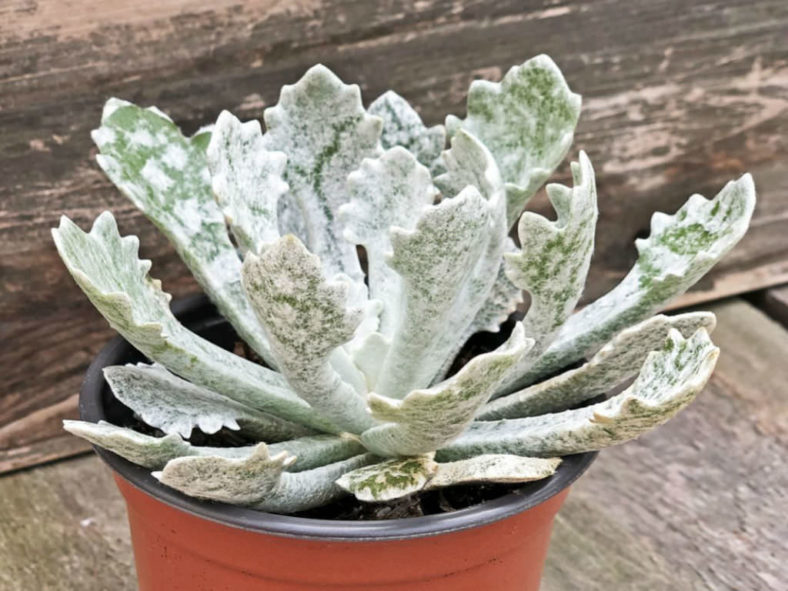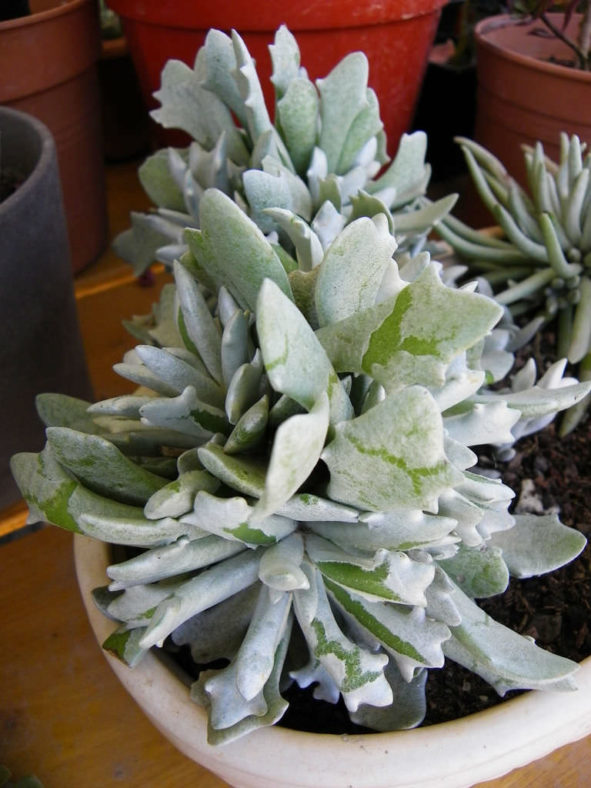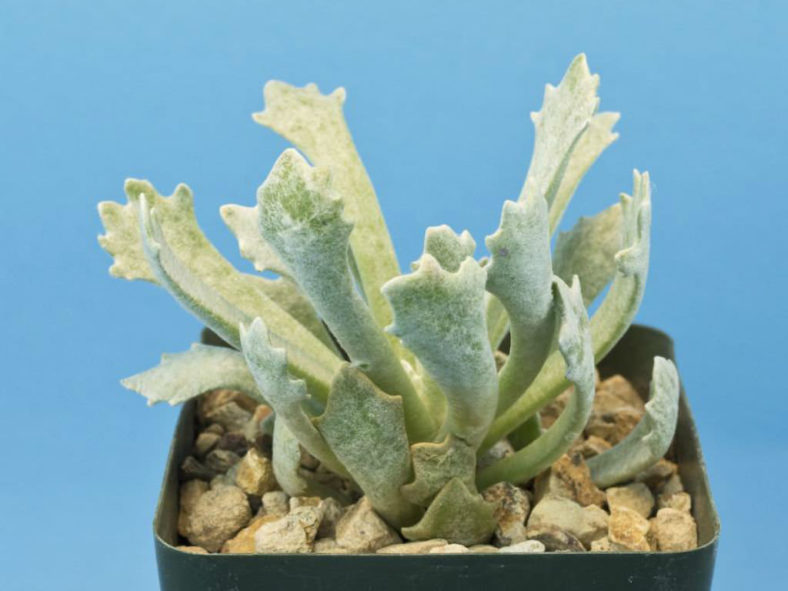Scientific Name
Caputia scaposa var. addoensis (Compton) B.Nord. & Pelser
Synonym(s)
Senecio addoensis, Senecio scaposus var. addoensis
Scientific Classification
Family: Asteraceae
Subfamily: Asteroideae
Tribe: Senecioneae
Genus: Caputia
Description
Caputia scaposa var. addoensis, formerly known as Senecio scaposus var. addoensis, is a succulent plant with fleshy flat leaves with lobed, triangular to spoon-shaped tips. It forms a small clump in time. The young leaves have a white to silvery tomentum that may be shed as they age. This covering serves to reflect the sunlight, preventing overheating or burning.

Hardiness
USDA hardiness zones 9b to 11b: from 25 °F (−3.9 °C) to 50 °F (+10 °C).
How to Grow and Care
Established Senecios are extremely drought tolerant. They need some water during the summer but do not leave the soil wet for prolonged periods. Allow the soil to dry out between waterings in winter when they are somewhat dormant. Since they are growing in sandy soil, nutrients will need to be replenished. Fertilize annually, but lightly. Too much fertilizer will cause a lot of leggy growth.
Taller varieties can get floppy. You can prune them back to where the stem is firm in early spring. You can even root the cuttings.
Plants can be divided or repotted in early spring. If you are growing them in containers, they enjoy spending the summer outdoors. Wait until there is no danger of frost and move them back indoors in the fall.
Senecio can be grown from either seed or cuttings. Seeds prefer warm temperatures and constant moisture to germinate. Propagation by cuttings is an easier and faster method. Cut during the growing season, from early spring to fall. Plant the cuttings into containers with sandy soil.
Learn more at How to Grow and Care for Senecio.
Origin
Caputia scaposa var. addoensis is endemic to the Uitenhage District in the Eastern Cape, South Africa.
Links
- Back to genus Caputia
- Succupedia: Browse succulents by Scientific Name, Common Name, Genus, Family, USDA Hardiness Zone, Origin, or cacti by Genus
Photo Gallery
Click on a photo to see a larger version.


